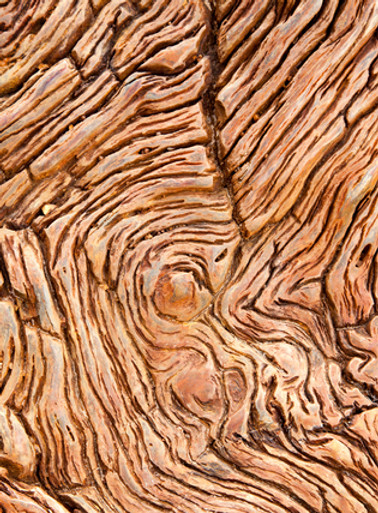
The most desirable materials
…and even more amazing technologies, which help us to refine them before creating another high-quality masterpiece. But we keep these secret.
Merino wool
From Australia
This comes from Merino sheep – the breed offering the best wool for luxury attire and sports apparel.
The world’s finest Merino wool is imported from Australia, which provides 81% of the world’s superfine wool. From sustainable farms only.
Effortless to care for, many Merino wool clothes can be washed in a washing machine.

Lotus silk
From Asia
Lotus silk is a fabric produced from the stem fibres of the lotus. Due to the intricacy and rigorous nature of weaving these, lotus silk is considered one of the most precious textiles in the world.
Lotus silk was first used to weave robes as an offering to Buddha or Buddhist monks. Today it finds its place in the production of bed linen, homewear and accessories, including hats and scarves.


Spider silk
From Madagascar and Japan
Jacob Paul Camboué researched spiders in Madagascar in the late 19th century. Together with M. Nogué, he built a small hand-operated tool to extract silk from more than 20 spiders at once without harming the animals.
The partners set up an entire industry on the island and even exhibited “a complete set of bed hangings” at the Paris World Fair in 1898.
Nowadays, laboratories also contribute their share of spider silk.
Vicuña wool
From South America
While being related to llamas, vicuñas are believed to be the wild ancestors of domesticated alpacas, which are bred for their wool.
Vicuñas produce tiny amounts of exceptionally fine wool, which is extremely valuable as every animal can only be shorn once in three years and has to be caught in the wild.
Rich and glossy, vicuña is the softest is the most sought-after wool on Earth!


Bamboo linen
From Asia
We prefer to produce bamboo fibre with a mechanical-bacterial process similar to retting flax into linen. Thus, the woody component is ground mechanically prior to breaking down the walls and extracting the fibre using natural enzyme retting and washing.
This select fibre is then spun into yarn, which has a silky touch. This textile is occasionally called bamboo linen. The natural processing of litrax bamboo keeps the fibres durable and allows the production of high-quality products. It also prolongs the fabric’s shelf life.
Eucalyptus
From Asia
Eucalyptus is a green fashionista’s perfect textile. Eucalyptus clothing is produced from a fabric that goes by the name TENCEL Lyocell. It is made from the crushed pulp of the eucalyptus tree.
This material is silky, breathable and extremely light.
Fully recyclable and biodegradable, this natural wonder will suit any person with a sensitive skin.
While combining the softness of silk and the durability of polyester, eucalyptus clothing boasts antibacterial properties and a skin-cooling effect.


Cactus leather
From South America
Opuntia cactus is the source of this sustainable leather alternative. Only mature leaves are picked for leather production, leaving the plant core unharmed. Therefore, new leaves will grow in 6–8 months for the next cycle.
Vegan-friendly cactus leather helps protect animals and is 100% organic, partially biodegradable and extremely soft. It does not contain phthalates, harmful chemicals or PVC and is recognised for its high durability.
Recycled gold
From Europe
An innovative product in jewellery, recycled gold brings considerably less harm to the environment than when traditionally extracted. It can possess the highest purity, and we cooperate with one of its largest producers.
Our craftsmen have more than 100 years of goldsmithing experience. Therefore, they can deliver products of any complexity while maintaining the utmost quality.


Mushroom leather
From USA & Europe
Mushroom leather is a vegan-friendly material that serves as an ecologically sound alternative to animal leather. This material is produced from mycelium, which is the vegetative part of a fungus. The fashion industry currently regards mushrooms as one of the most sustainable clothing materials.
Being 100% sustainable, mushroom leather production is in line with circular economy principles. This natural leather is biodegradable at the end of its use life.
Lab-grown diamond
From USA & Europe
Lab-grown diamonds are chemically and physically identical to natural precious stones. In fact, they are composed of the same material: pure carbon crystallised in an isotropic 3D form.
Such diamonds can be cut into gems, and various colours can be achieved: clear white, yellow, brown, blue, green, pink and orange.
These diamonds are sustainably produced, which makes it our pleasure to offer them within our products.


Bog and petrified wood
From Asia and Oceania
Trees can reach hundreds of thousands of years in age, with growth rings being produced in marvellous natural patterns. Products made from certain types of such trees present an investment opportunity.
Petrified wood is the name given to a special type of fossilised remains of terrestrial vegetation. Petrifaction comes as stone replaces wood in a mineralisation process.
Bog-wood is often even more valuable. Due to swamp conservation, it is neither rotten nor petrified. The kauri tree from New Zealand is a particularly valuable specimen.
Mammoth ivory
Past and permafrost
Mammoth ivory is an exquisite material for accessories, much more exclusive and eco-friendly than elephant ivory.
Bones are mined in places where the permafrost is melting.
A ‘million-year-old’ accessory is indeed something special and upscale. Our expert ivory carvers will be happy to translate any wish into reality.

